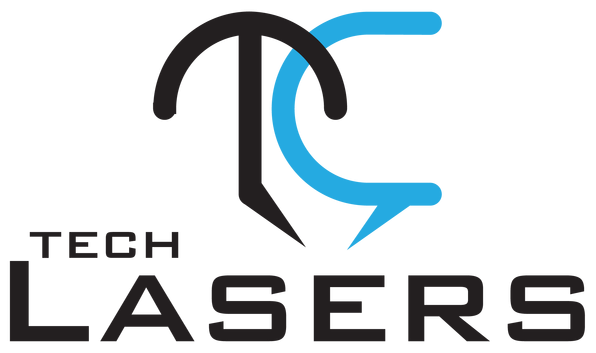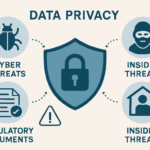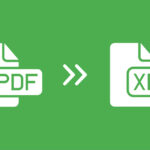Introduction to Digital Advertising
In today’s fast-paced digital world, advertising has drastically transformed from traditional methods to advanced digital strategies. Digital advertising encompasses various online channels like social media, search engines, and display ads, allowing businesses to target their audience more effectively. Leveraging digital advertising solutions can significantly enhance campaign performance and reach.
As more consumers spend time online, businesses must adapt their marketing tactics to capture and retain their audience’s attention. Digital advertising provides the flexibility, targeting options, and data-driven insights necessary for success in today’s competitive landscape. This shift demands a deeper understanding of digital avenues and how to utilize them for maximum impact. With the digital realm offering diverse platforms, from social media giants like Facebook and Instagram to search engines like Google, marketers have a vast playground to explore and conquer.
Key Digital Advertising Strategies
There are several strategies that businesses can employ to enhance their digital advertising efforts:
- Pay-Per-Click (PPC) Advertising: With this model, advertisers can charge a fee for each click on their advertisement. One well-liked platform for PPC advertising is Google Ads. This method drives instant traffic and effectively promotes time-sensitive offers or events.
- Social Media Advertising: Strong advertising options are available on social media sites like Facebook, Instagram, and LinkedIn, enabling targeted advertising according to user demographics and interests. Social media ads excel in engagement, making them ideal for building brand awareness and community interaction.
- Search Engine Optimization (SEO): Optimizing your website for search engines improves organic visibility and attracts more traffic. SEO involves various practices such as keyword optimization, backlinking, and improving site speed to enhance user experience and search engine rankings.
- Email Marketing: An effective email campaign can help convert and nurture leads. Emails provide a direct line to your audience, perfect for personalized messages, promotional offers, and customer retention efforts.
- Influencer Marketing: Influencer partnerships enable companies to expand their consumer base and gain the trust of prospective clients. With their established follower base, influencers can effectively endorse products, increasing brand credibility and sales.
The Power of Data-Driven Advertising
Data-driven advertising leverages user data and analytics to create targeted ad campaigns. Businesses can tailor their advertisements using user behavior and preferences insights, increasing the likelihood of engagement and conversion. Data-driven approaches ensure that advertising budgets are spent efficiently, maximizing the return on investment.
According to a recent Forbes article, data-driven advertising is poised to become the leading approach in digital marketing due to its precision and effectiveness. Businesses can more easily produce relevant and engaging advertisements by gaining a thorough grasp of the requirements and preferences of their target audience through the analysis of data from multiple channels. This method also allows for continuous optimization, as real-time data provides immediate feedback and enables agile adjustments to improve campaign success.
Benefits of Programmatic Advertising
Programmatic advertising uses real-time bidding to optimize ad placements while automating the buying and selling of online ad space. This strategy maximizes return on investment by ensuring that advertisements are seen by the appropriate people at the proper times. Programmatic advertising allows for greater efficiency, reducing the time and effort needed to manage ad campaigns manually. It leverages advanced algorithms to analyze audience data, allowing advertisers to serve personalized content to individual users based on their online behavior and preferences.
Programmatic advertising spending has grown significantly, highlighting its increasing importance in the digital advertising landscape. This increase is ascribed to programmatic ads’ capacity to provide users with tailored and pertinent content, which raises engagement rates and improves overall performance. The automated nature of programmatic buying also allows for more strategic budget allocation and real-time campaign adjustments, driving better results with less manual intervention.
Creating Engaging Digital Ad Content
Creating compelling and visually appealing ad content is crucial for attracting and retaining audience attention. This involves eye-catching graphics, clear and concise messaging, and strong calls to action (CTAs). Here are some tips for creating engaging digital ad content:
Use high-quality images and videos: Visually appealing content captures attention and can convey your message more effectively. High-resolution photos and professionally produced videos can significantly enhance the perceived value of your brand.
Craft a strong headline: A captivating headline can pique readers’ interest and entice them to continue reading. Your headline should be clear and concise, highlighting the main benefit of your product or service.
Highlight critical benefits: Communicate the unique selling points of your product or service. Use bullet points or brief sentences to highlight how your offering addresses a need or solves a problem.
Please include a clear CTA: Urge visitors to proceed, whether buying something, subscribing to a newsletter, or contacting your company. Your CTA should be direct, action-oriented, and aligned with the overall goal of your campaign.
Engaging content draws attention and helps you establish rapport and trust with your audience. It’s critical to keep testing and improving your creative components to determine what appeals most to your target audience.
Measuring and Analyzing Ad Success
Effective digital advertising doesn’t stop at campaign execution; measuring and analyzing performance to understand what works and what doesn’t is essential. Click-through rates (CTR), conversion rates, and return on ad spend (ROAS) are examples of key performance indicators (KPIs) that offer insightful data for ongoing development. Businesses can optimize their ad strategies and attain superior outcomes by conducting frequent performance reviews of their campaigns and using data to inform their decisions.
Advanced analytics tools offer detailed reports on various aspects of your campaign, from audience engagement to overall ROI. These insights enable marketers to identify strengths and weaknesses, adjust targeting parameters, and improve ad creatives. The end goal is to foster a cycle of continuous improvement where each campaign builds on the learnings of the previous ones, leading to progressively better performance and more effective use of advertising budgets.

 Data Privacy Threats and How to Tackle Them
Data Privacy Threats and How to Tackle Them  The Role of Business Insurance in Financial Planning
The Role of Business Insurance in Financial Planning  How to Create the Ultimate At-Home Setup for Work and Play
How to Create the Ultimate At-Home Setup for Work and Play  Methods for Creating High-Quality Custom Apparel with Direct-to-Film Transfers
Methods for Creating High-Quality Custom Apparel with Direct-to-Film Transfers  How SASE Solutions Empower Productive Workforces in a Digital Era
How SASE Solutions Empower Productive Workforces in a Digital Era  Excel vs PDF: Which Dominates Document Sharing in 2025? (Data-Driven Comparison)
Excel vs PDF: Which Dominates Document Sharing in 2025? (Data-Driven Comparison)  TitaniumInvest.com Money 2024: AI‑Driven Tools Outperform Traditional Banking
TitaniumInvest.com Money 2024: AI‑Driven Tools Outperform Traditional Banking  Why Your Link Building Efforts Might Fail
Why Your Link Building Efforts Might Fail  How to Request or Give Remote Control in a FaceTime Call on iPhone
How to Request or Give Remote Control in a FaceTime Call on iPhone 